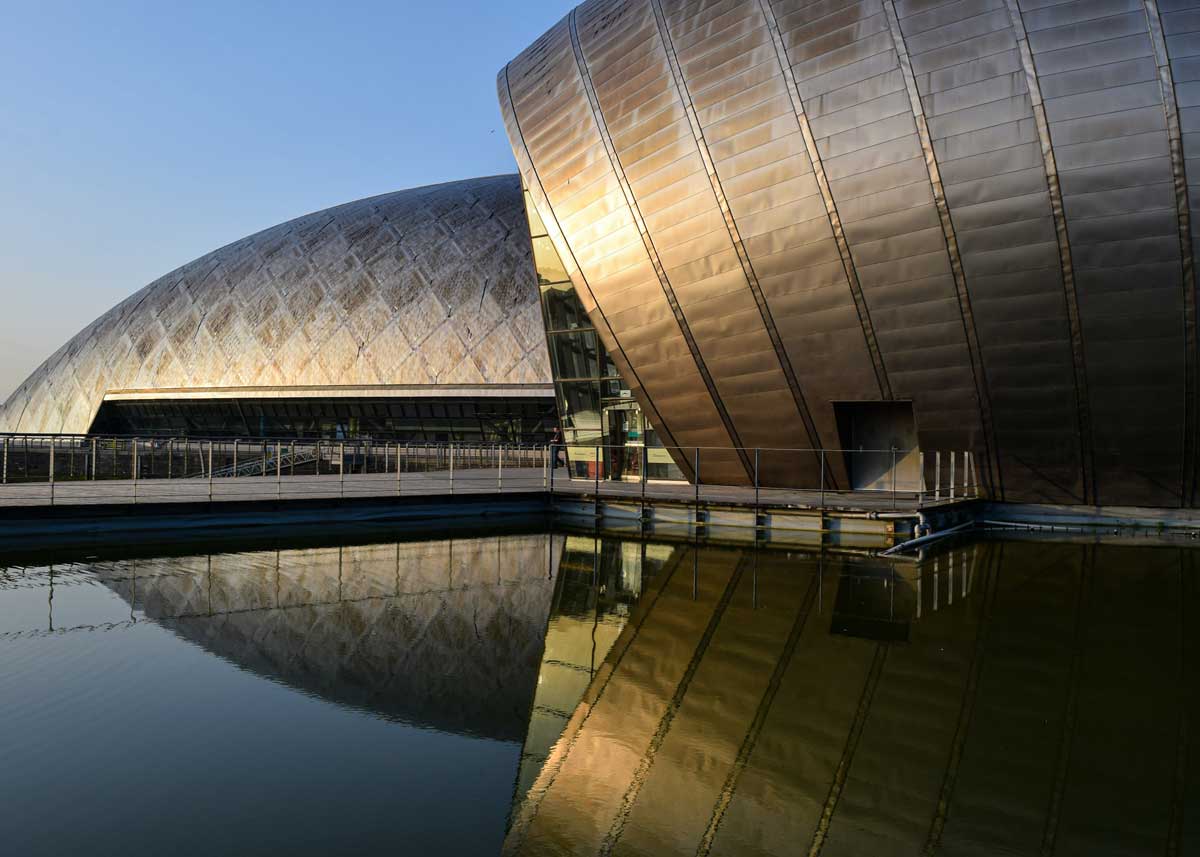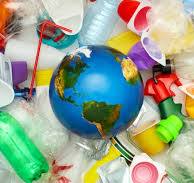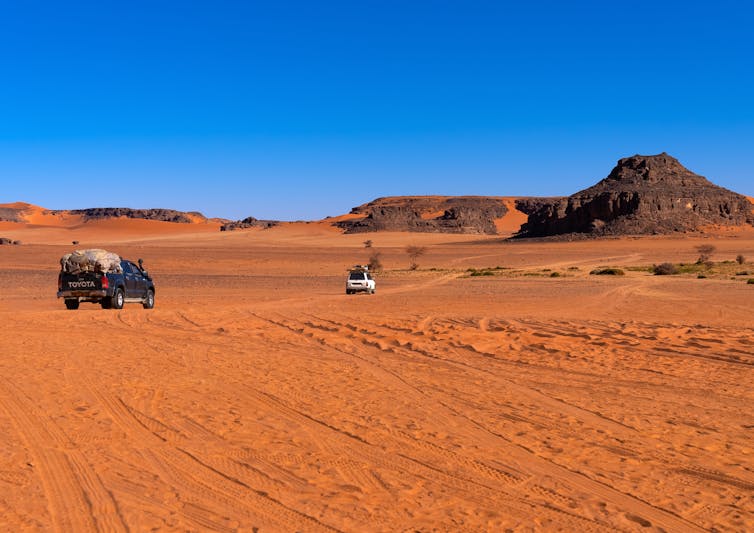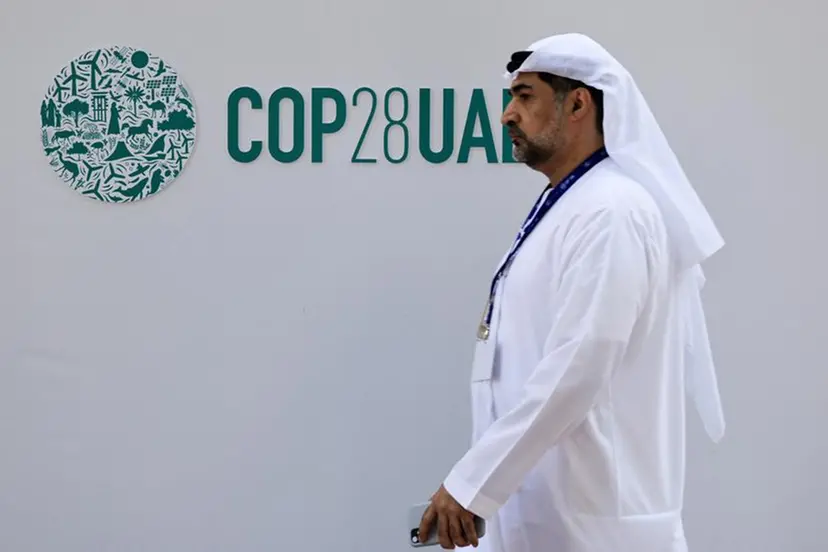Russia is certainly now taking climate-related issues seriously, but even though a latecomer in embracing the climate change agenda, it will not simply accept the West’s or the EU’s lead. Rather, it will act in accordance with its national interests.
At the COP26 UN climate change summit that ended last week, Russia was noted mainly for President Vladimir Putin’s decision not to attend in person. Much less reported was the fact that Russia sent a large delegation—312 people—to Glasgow: more than the host country itself, and twice as many as the United States. The quality of the Russian delegation was no less impressive. It included representatives of not only the presidential administration; the ministries of energy, forestry, and economic development; the London embassy; and the Moscow city government, but also of leading banks like Sberbank and VEB, and major corporations like Rosatom, Gazprom, Severstal (metallurgy), Inter RAO (electricity), and Sibur (coal). All of those people came not only to listen and learn, but also to engage and build contacts.
The intensity of the Russian engagement reflects the sea change that has occurred in the Kremlin’s attitude to climate change over the past year or so. Flat-out denial of climate change; the interpretation of global warming as a blessing for a northern country; and the dismissal of its human origins are all history. Putin now repeatedly points out that temperatures are rising two and a half times faster in his country than the global average.
What caught Putin’s attention must have been the nexus between climate change and global energy policies. Both of Russia’s main trading partners, the European Union and China, have made carbon neutrality pledges. The wake-up call came with the EU’s decision to impose a carbon tax on goods imported into Europe from as early as 2023. There are well-founded estimates suggesting that by the early 2030s, Russia may begin running chronic budget deficits as demand for its oil, pipeline gas, and coal exports slumps. Russia’s other exports, from agricultural produce to metals, arms, and machinery, will not be sufficient to compensate for that shortfall.
As a result, Russia’s climate policy has quickly shifted up through the gears. Weeks before Glasgow, Putin set a deadline of 2060 (the same as China) for Russia to achieve carbon neutrality, and just days before COP26 began, the Russian government came up with a strategy paper on the subject. At the conference itself, Russian delegates laid out the key elements of the emerging Russian climate and energy policy. Those elements can be summarized as follows.
First, Russia will insist that nuclear and hydroelectric power, which account for some 40 percent of the country’s energy mix, should be internationally accepted as green. This is of central practical importance for Moscow, which has been able to restructure the country’s nuclear industry and turn it into one of the world’s most effective. In addition, Moscow claims, another 40 percent of energy in Russia is derived from natural gas, a low-carbon fuel. Natural gas, of course, has long been a centerpiece of Russia’s energy exports and a major foreign policy asset.
Second, two-thirds of the territory of Russia—the world’s largest country by far—is covered by forests. That accounts for about of 20 percent of the Earth’s forests: well ahead of Brazil and Canada. Moscow argues that the carbon absorption capacity of its forests should be factored into the equation and offset against Russia’s CO2 emissions.
Third, Russia is determined to weigh in on the rules of international carbon trading. In a word, Russia doesn’t want to merely follow the rules on climate; it wants to set the rules. On top of all this, Moscow has ambitions to become a major hydrogen energy producer. It also has a protective attitude toward the melting Arctic, where it has the largest shoreline and exclusive economic zone of all littoral countries.
In sum, Russia is certainly now taking climate-related issues seriously, but even though a latecomer in embracing the climate change agenda, it will not simply accept the West’s or the EU’s lead. Rather, it will act in accordance with its national interests, carefully balancing climate-related measures against economic growth, and traditional energy sources against renewables, while building situational alliances with other countries. These alliances may result in some strange bedfellows, since the EU carbon tax will adversely affect exports from countries as diverse as Australia, India, Russia, and Ukraine.
Getting other countries (particularly those in the EU) to accept Russia’s arguments is going to be very challenging. However, expecting Russia, not to mention China, India, and Brazil—none of whose leaders were in attendance at Glasgow—to simply accept Western principles and norms is delusional. Russia joined the pledge on deforestation at COP26, but refused to sign up to another one on methane gas emissions supported by the United States and the West, and also refrained from promising action on coal, alongside the United States, China, and India. With each nation engaged in climate talks, whatever its government’s rhetoric, seeking to protect its interests, conflicts, and hard bargaining are inevitable. The global nature of the climate issue ensures that no agreement can be effective without the participation of the major players, and that includes Russia, the fourth biggest emitter.
For some in Moscow, engaging on climate change is an opportunity to improve relations with the West while sidelining other conflicts and differences. In principle, this is another delusion that falls into the same category as the earlier forlorn hopes for a grand World War II–style anti-terrorist alliance at the beginning of the 2000s, or for a united anti-COVID front last year. The Kremlin has to appreciate two things. Firstly, the reasons for the confrontation with the United States and alienation from Europe will not disappear in the environment of cooperation on climate. It’s possible to imagine that, should some specific Western sanctions on Russia be determined to be obstacles to climate-friendly steps by Moscow, they might be eased or waived, but no more.
Secondly, for the West, Moscow’s promises will not be enough. What will be taken seriously by outsiders is actions leading to concrete results. Thus, the crux of the matter lies in domestic politics rather than international diplomacy. While it is true that in Russia it is sometimes enough to convince just one person to make a seminal decision, implementing any decision taken will depend on interaction among a large number of players. Climate change–inspired policies are leading to an energy transition that will have a major impact on Russia’s political economy and politics. It should not be forgotten that in Russia, the energy transition coincides with a political and generational one, which within a decade or a little more will usher in a new constellation of power brokers.
It appears that, for now, President Putin has vested authority for strategizing and coordinating the energy transition in First Deputy Prime Minister Andrei Belousov. In his public statements and interviews, Belousov has already explained his vision of Russia’s energy transition. In his view, the transition is part of a strategy of achieving steady annual economic growth of at least 3 percent. Technological modernization, including energy saving; legislation adjustment and implementation; appropriate regulation and taxation instruments; and the expansion of hydrogen energy production to the level of 20 percent of the world market are the key elements of the government’s policy. To deal with the EU’s impending carbon tax, Belousov suggests motivating companies to invest in climate-friendly initiatives in Russia, so that much of the money stays at home rather than being paid in overseas taxes.
For all its recent embrace of the climate agenda, the Kremlin is likely to tread cautiously and avoid making rash decisions. In parallel to Glasgow, another conference was held in Verona. It brought together the world’s oil and gas leaders, including Rosneft CEO Igor Sechin. He warned that it would be a big mistake to reduce investment in long-term fossil fuel projects. Indeed, the next few years are likely to see increased demand for traditional energy. If anything, the recent gas crisis in Europe has been a vivid illustration of the current situation. The future of Russia’s economy and its global standing, however, will depend on its leaders’ ability to correctly identify long-term trends and maintain the right balance in the course of an inevitable but difficult transition.




















